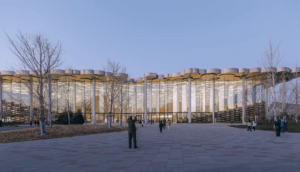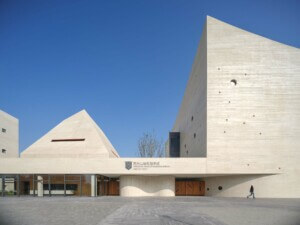A chilling news documentary released by VICE News Tonight late last month highlighted the mystery behind China’s Uighur people, a minority Muslim group that’s been disappearing under the cover of night. The United Nations believes at least one million members of this community are being detained in “re-education camps” around the Xinjiang province in northwestern China, and their children are being taken to state-run orphanages—renamed “kindergartens”—where they’re indoctrinated into Chinese culture and customs.
Earlier this month, 22 countries sent a joint letter to the UN’s High Commissioner for Human Rights urging China to stop the mass detention and allow UN officials to investigate. According to government officials in Beijing, these camps have been created to curb Islamic extremism and ensure the safety of the Chinese people. Other reports have noted allegations of torture.
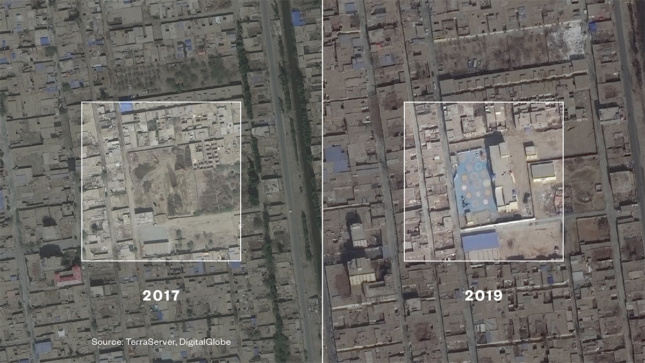
VICE News Tonight went undercover in Xinjiang to capture the dystopian world that’s been set up to control locals through a massive network of surveillance infrastructure and constant policing. The reporters even got footage of eight Uighur men being taken away after midnight in total silence. While it seems most people within Xinjiang know about these Uighur holding facilities, they don’t exactly know where they are located. So VICE News Tonight’s Isobel Yeung and her crew followed Google Maps and a series of coordinates to find the internment architecture that’s been both built and adapted for “vocational training” of the Uighur people.
AN spoke with Yeung over email about her experience in Xinjiang and what her team uncovered about the Uighur’s plight during the production of They Come for Us at Night: Inside China’s Hidden War on Uighurs, which premiered on VICE News Tonight on HBO on June 27th.
AN: What was your initial reaction to all the security infrastructure and policing set up in Kashgar?
IY: It’s a really intense set-up. There are surveillance cameras every few meters, facial recognition cameras, full-body scans, facial and iris scans, groups of armored police roaming the streets with big spiky clubs, police cars and armored trucks patrolling the streets… It’s unnerving and chilling to be in.

Did you notice how other Uighurs or Chinese people approached these interactions?
It’s all become eerily normal for the people living there. I asked one Uighur woman who had just had her phone scanned and been strip-searched while entering a public space how she could handle being constantly treated as a security threat. She just shrugged and told me that she’d got used to nothing making sense anymore.
The documentary showed the rows of surveillance lights at the Urumqi bazaar. Were there other spaces in which you were overwhelmed by the number of cameras?
Cameras were everywhere. Only when I was in the safety of my hotel room did I feel like I wasn’t being watched (and even then, we didn’t know if they’d bugged our rooms). In public spaces where there are likely to be gatherings, or on the front of public buildings like schools, hospitals, and markets there were more. Around any mosque there were clusters.
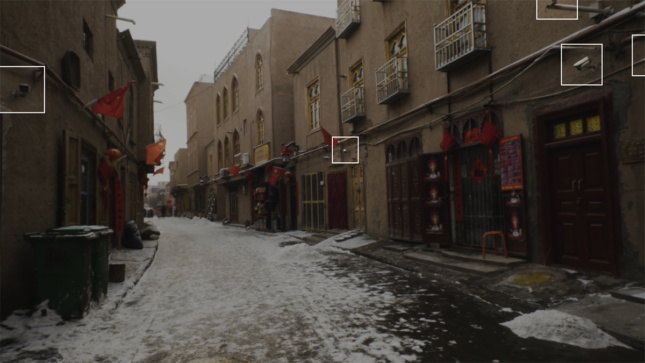
Can you explain the spatial context of the re-education campus you saw in Kashgar?
From AN: Yeung referred us to University of British Columbia law student Shawn Zhang and his work completed over the last few months pulling up satellite imagery of the camps throughout Xinjiang. See them all here.
Did anyone in the group of former detainees you spoke with in Istanbul talk about the architecture of the camps and their layout?
Over the course of six months, we spoke to many people who had spent time in the camps—in Istanbul, the US, and elsewhere in Europe. Some of them had been in detention centers that had been converted into camps, others had been in newly erected camps. One woman told us that there were many cells, with around 20 people per cell, and that interrogation and isolation cells were underground. Many of them spoke of the sounds they heard such as people arriving in the night, screams from other cells, people being beaten, chains dragging, and endless propaganda songs.

Many of them said that there were cameras inside the rooms and cells, so they were being watched the whole time. This made it difficult to communicate with each other. They talked about having to make their beds with military perfection and about having to sit with their feet crossed, facing the front for hours on end while they were taught Chinese law.
Can you explain the spatial context of the kindergartens in Hotan?
They were mostly in the outskirts of town often in run-down neighborhoods quite far from the city center. They look somewhat out of place given their surroundings.
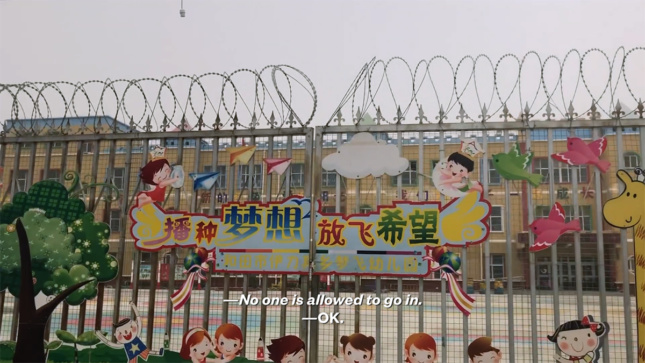
In your opinion, what is the architecture of the large kindergartens communicating to both the children, the Uighur adults, and the rest of the Chinese public?
These buildings look like brightly colored, garish castles. There are Mickey Mouse’s painted on the walls and bright patterns on the ground. They’re clearly designed with children in mind. Several local Han Chinese adults told us that these are examples of how the Chinese government is looking after Uighur children, which I think is the impression they’re trying to give. But they’re also heavily fortified with big barbed wire fencing, high brick walls, and guards at the entrance.
Did anyone discuss with you the programming within the schools and whether it was similar or drastically different than what normal Chinese schools look like?
No one really discussed the programming. One young Uighur child told me that they have “ethics” classes and Han Chinese classes and written on the front of one of the kindergartens are slogans emphasizing that ‘ethnic unity’ must be taught and the Chinese language must be spoken. So that’s clearly a big focus for these kids.









